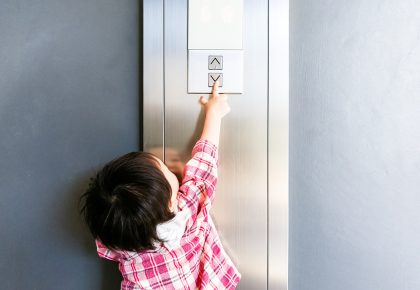Effective communication for community engagement
Engaging your community and avoiding common communication missteps
Communication is vital for building solid relationships and engaging the community. Board members should proactively communicate ongoing projects, repairs and issues impacting residents. They should also convey new plans to residents to get community buy-in and feedback.
It seems easy enough, but many boards commit communication missteps when connecting with their communities, often leading to more significant problems. So, what can boards do to avoid common communication mistakes and bridge the gap between the board and residents?
 Follow these simple tips for effective communication:
Follow these simple tips for effective communication:
-
Have a communication plan
-
Provide clear communication
-
Know your demographic
-
Engage via multiple communication channels
Read on as we break down each communication tip.
1. Have a communication plan
A common communication misstep that community association boards make is not creating an effective messaging process. And a lack of communication planning is a recipe for chaos. A lack of communication leads to mistrust and leaves the community in the dark about what's happening.
Poor communication can lead to disgruntled residents wondering what the board is doing. It also leaves board members without a roadmap for sharing information with residents about things that impact the community. Things like unplanned maintenance or plumbing issues need to be quickly communicated to residents.
Operating without a communication plan can make board meetings longer, and more challenging to run. More often than not, residents who feel out of the loop or ignored come to meetings to express frustration.
To save time and resources, a board should work with their community association manager to establish and maintain a communication process. The process should include what messages will be sent and how frequently. You can work with your legal counsel and property management team to create ready-to-go replies for common communication. For example, set messaging for when you’re dealing with violation disputes or other sensitive circumstances.
Because not everyone is a proficient writer, the board should establish who will be drafting the messages. You should also determine what communication channels would be the most effective for different types of messages.
The bottom line: Board members are volunteers with limited time and need to communicate effectively and quickly. Having a plan in place keeps members organized and communication between management and the residents proactive and professional. It also makes meetings more productive because communities with good communication have less resident pushback during sessions.
2. Provide clear communication
Imagine living in a community where the board forgets to communicate that elevators are undergoing maintenance. You live on the 20th floor, are rushing to work and only find out about the maintenance while waiting for an elevator. It's easy to see why this can be frustrating for residents and why the board needs to avoid the misstep of not being transparent enough.
 Clear communication is essential because it helps boards establish trust with the community. It also helps to enforce compliance with community policies because residents know the rules.
Clear communication is essential because it helps boards establish trust with the community. It also helps to enforce compliance with community policies because residents know the rules.
While being transparent is important, you also need to be careful not to overshare with residents. There is a fine balance between oversharing or holding back too many details. What you say in your message is critical. Boards should draft communications with clear messaging conveying important information, answering frequently asked questions and inviting residents to participate in more discussions.
Messaging should include engaging headlines, giving essential details like time, date and location of events, and setting up brief agendas for meetings. The information should explain why the message is important and why it should matter to the resident.
Clear and concise communication should increase awareness and decrease resident questions.
The bottom line: Creating the right messaging can create engagement and awareness throughout the community. The best practices to do so include concise information, timelines, and calls to action so residents participate in meetings and get involved. When a board does this it creates trust.
3. Know your demographic
When creating communication pieces, it's crucial to consider who you're trying to reach. Communities are made up of diverse groups of people. That's why it's vital to consider the demographic's needs when it comes to messaging and communication methods.
You might be communicating with renters or owners, young people or seniors. So, what you say and how you deliver the message can differ significantly depending on who you're trying to reach. Establishing key demographic groups when creating a communication plan can help draft announcements or notices in the future.
It will help to survey what communication methods your audience prefers and then provide consistent and accurate communication via that channel. In most communities, you may have onsite renters but offsite owners. So, it's important to make sure you reach both audiences with necessary information through channels that are accessible to both.
The bottom line: If you want to reach the right audience, you need to identify who they are and understand how they want to be reached. Not only does this help with delivering timely information, but it also shows the community that you're aware of their needs. Establishing open communication and trust.
4. Engage via multiple communication channels
It's important to remember that not every resident will use the same communication channels every day. Many community association boards face challenges getting through to residents. An effective communication plan should include a variety of options to message residents. These can include newsletters, email blasts, during the board meeting, or community board postings. You can also use a combination of the most effective methods.
 That may mean sending an initial email, a follow-up message via regular mail and distributing flyers or sending a text message to all residents as the final outreach. Another approach is to send out a survey to find out exactly how residents want to receive board communication. Assess which methods work best for your community and develop a plan around using those channels consistently.
That may mean sending an initial email, a follow-up message via regular mail and distributing flyers or sending a text message to all residents as the final outreach. Another approach is to send out a survey to find out exactly how residents want to receive board communication. Assess which methods work best for your community and develop a plan around using those channels consistently.
The bottom line: Diverse communities require varied forms of communication. Creating a communication strategy that includes multiple channels extends opportunities to reach more residents.
Engage your community association manager for assistance
Communication is a vital component of any community. The right community association management company will assist boards in developing an effective communication plan. Including addressing the who, what, where, when, and why of a good communication strategy.
Once a plan is in place, review it on an annual basis. If certain communication channels are no longer effective, consider alternate options. If you see a major shift in the demographics of your community, ensure you understand their preferred communication methods.
Creating a communication plan can seem challenging at first. But once it's completed and properly implemented, communicating with your residents becomes much easier. An effective communication plan builds trust and fosters partnership in the community.